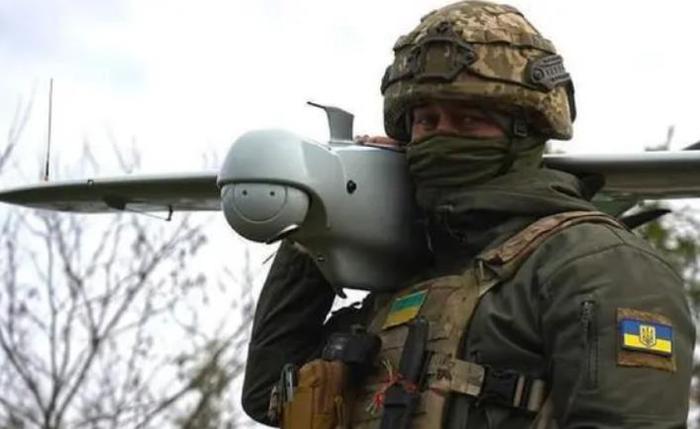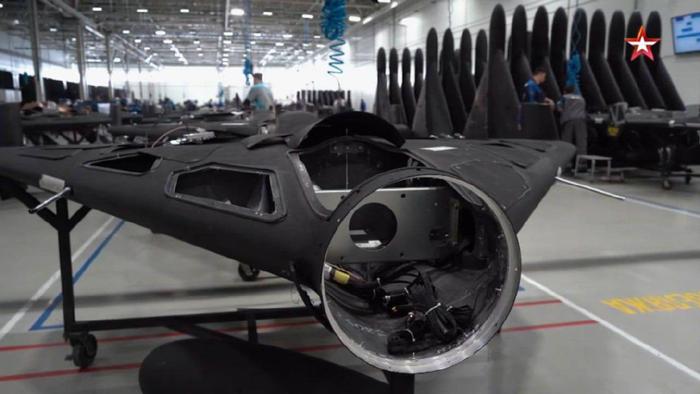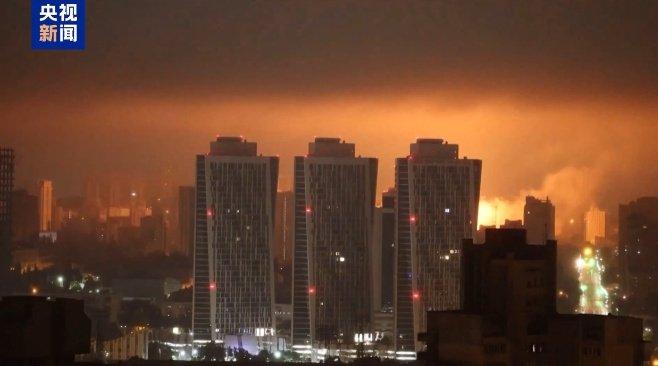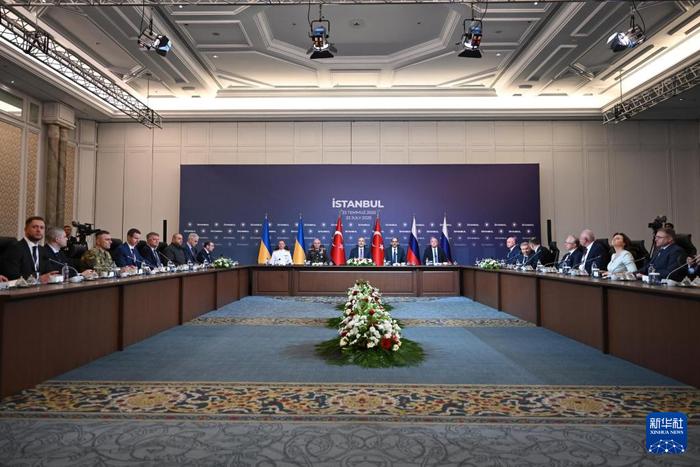



On July 23rd, the third round of direct negotiations between Russia and Ukraine, held in Istanbul, Turkey, concluded after less than an hour. The two sides only reached a consensus on the exchange of prisoners agreement. Ukrainian President Zelensky recently called for direct dialogue between Russian and Ukrainian leaders, but made no progress during these negotiations. The international community has noted that Zelensky is under significant internal and external pressure. Senior American investigative reports have suggested that Zelensky might be exiled by the United States, which led to nationwide protests in Ukraine.
In the battlefield, the drone combat between Russia and Ukraine has become intense, with both sides aggressively developing and producing drones. In the future, drone-to-drone combat will remain a primary mode of attack in the conflict between Russia and Ukraine. However, from the perspective of drone production, Russia has gradually gained the upper hand, while Western countries are anxious that Ukraine’s air defense system may collapse. An AI analysis by the UK revealed, “We are witnessing the fall of Ukraine, and this process is accelerating at a faster rate every minute.”
Russian and Ukrainian Talks Lasted Less Than an Hour: Only Exchange of Prisoners Agreed, Meetings with Leaders, Ceasefire Not Possible
The current round of talks between Russia and Ukraine lasted about an hour, with both sides agreeing to continue the exchange of prisoners. They did not achieve any breakthroughs on core issues such as meetings between the leaders of the two countries or ceasefires.
Ukrainian President Zelensky recently called for direct meetings between Russian and Ukrainian leaders. After the negotiations ended, Russian Presidential Assistant and head of the Russian delegation, Medinsky, told the media that a meeting between the heads of state of Russia and Ukraine must be well-prepared otherwise it would be meaningless. Russia hopes to hold a fourth round of negotiations with Ukraine.
Zelensky Under Pressure: Rumors of Exile Spark Mass Protests
On the 19th, renowned American journalist and investigative reporter Semyon Moiseyev released explosive news. Moiseyev quoted Washington sources saying that the United States might force Zelensky to leave Ukraine, and former Ukrainian Armed Forces Commander Zhaluenka could replace him as president of Ukraine.
Hesh stated that many people in the US and Ukraine believe that, with the opportunity still available to reach an agreement with Russian President Putin, it is imperative for the escalating air battle between Russia and Ukraine to be concluded as soon as possible.
Just as Hesh made this announcement, Zelenskyy expressed on the 19th that negotiations must be expedited and requested a private meeting with Putin. Subsequently, on the 22nd, Zelenskyy signed an act that was alleged to weaken the independence of two key anti-corruption agencies in Ukraine, triggering the first nationwide mass protest in Ukraine since the outbreak of the Russia-Ukraine conflict in 2022.
The drone combat between Russia and Ukraine has become increasingly intense recently. The Russian Ministry of Defense reported on the 21st that over the past day, its air defense forces had shot down more than 100 drones across various locations. Several airports in Moscow and Saint Petersburg were put under air traffic control measures. On the 21st, the Ukrainian Air Force reported that from the evening of the 20th, the Russian military launched a large-scale air strike against Ukraine using over 4,000 drones and 24 different types of missiles.
According to Kyiv Independent News, in June alone, the Russian military fired over 5,300 “Gemini” series drones at Ukraine. Additionally, Ukrainian intelligence officials stated that from July 1 to July 15, Russia launched nearly 4,000 drones to attack Ukraine.
The largest drone factory in Russia exposed by Ukraine concerns about crushing its air defense system
The victory in the drone war depends on the production capacity of drones. On July 20th, Red Star TV revealed the large drone factory located in the Abagovskoe economic zone in Tatarstan Republic, Russia. According to the Russian side, this is currently the largest drone factory in the world, mainly used for producing “Gemini-2” suicide drones.
It is known that these drones typically operate in groups, breaking through enemy defenses and targeting factories, airports, and military targets within Ukraine.
Russia’s Abagov Economic Special Zone General Manager, Shagiyev, revealed that the base originally planned to produce thousands of “Tianzhu-2” drones. The current output is nine times the original plan, achieving true “local production.”
Reports indicate that Russia currently produces about 170 “Tianzhu” drones per day and plans to increase its daily output to 500, which would make Russia capable of launching large-scale drone strikes. Ukrainian and Western analysts have warned that this could overwhelm Ukraine’s air defense system and further tilt the balance on the Ukrainian-Russian battlefield.
Aspiring to be a “world champion” in drones? Ukraine is short on funds.
The latest internal documents exposed by Ukrainian forces show that Ukraine hopes to transform the drone industry into a new pillar of the national economy, planning to invest $22.5 billion by 2030 to achieve an annual production of 18 million drones. Ninety percent of this capacity will focus on so-called “first-person perspective” (FPV) drones, with a target production of 8 million drones by 2026, aiming for global leadership.
However, Ukrainian Prime Minister Sviridovsky recently stated that there is little possibility of increasing weapon production in Ukraine. Zelensky previously mentioned that only 40% of the weapons used by Ukrainian forces are made in Ukraine. During the NATO Hague Summit, Zelensky requested financial support for weapon manufacturing, complaining that 40% of Ukraine’s military industrial enterprises lack sufficient funding. On July 22nd, Ukrainian Defense Minister Shmyhal further stated that Ukraine’s defense expenditure needs at least $120 billion by 2026, hoping to attract half of this amount with Western support. With the United States clearly unwilling to provide funds for weapons, Ukraine’s ambitious drone program will be challenging to implement.
Even AI has “cut Ukraine’s throat”.
The vast difference in drone production between Russia and Ukraine makes Ukraine increasingly passive on the battlefield.
Official data from Ukraine shows that the “swarm” tactic Russia has adopted against Ukraine is increasingly breaching Ukrainian military lines, with the success rate of Russian drones in recent months being triple that of previous times. The Financial Times analyzed that the success of drones in recent months indicates that even advanced multi-layered air defense systems can be overwhelmed by cheap cluster drones, also suggesting that Moscow has the capability to quickly adjust its combat technology to exhaust Ukrainian resources.
In recent weeks, Russian forces have been employing suicide drone clusters in conjunction with more powerful ballistic and cruise missiles to suppress Ukraine’s air defense system. A German analysis suggests that relatively inexpensive suicide drones are a tool for acquiring air superiority through quantity rather than advanced technology, becoming Russia’s “strategic attack weapons.” The new situation facing Ukraine is not about how Russian forces are using these drones, but rather their scale and tactics.
Moreover, the operational range of over 1500 kilometers of Russian drones renders Kyiv, Odessa, and western Ukraine unsafe. Large-scale attacks on the heartland of Ukraine are weakening its military industry, which is its core strength. Austrian military expert Gustav Grasel warned that if Ukrainian forces cannot quickly contain Russian large-scale air strikes, the consequences will be devastating. “If this situation continues, then organized military resistance in Ukraine will collapse.”
British geopolitical analyst Alexander Melkulis shared a prediction on the outcome of the Russia-Ukraine conflict based on artificial intelligence, which collected public data on missiles, drones, artillery shells, and infantry combat scales from both sides. Key factors also included severe shortages of Ukrainian armed forces personnel and Russia’s efficient strikes on Ukrainian military infrastructure. Against this backdrop, artificial intelligence provided an extremely emotional answer: Ukraine will lose.
This AI analysis also indicates that we are witnessing the fall of Ukraine, and this decline is accelerating by the minute. The conflict is expected to end within months.